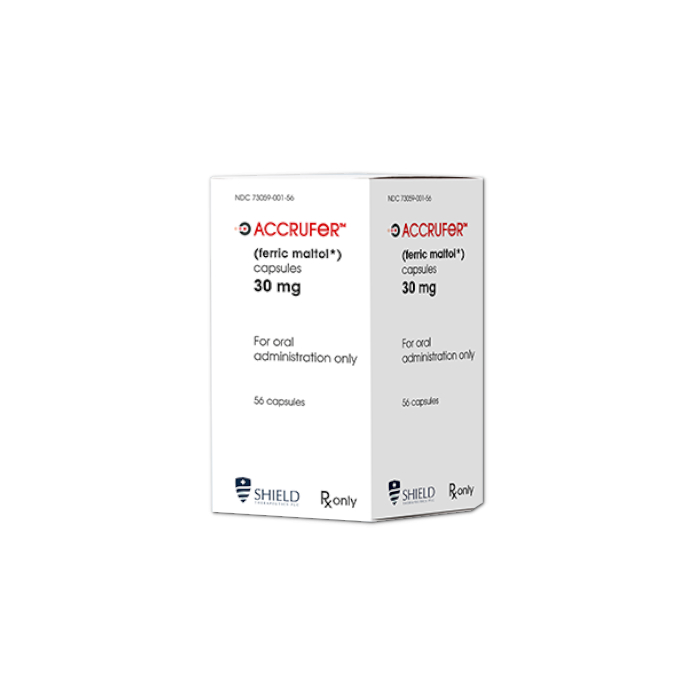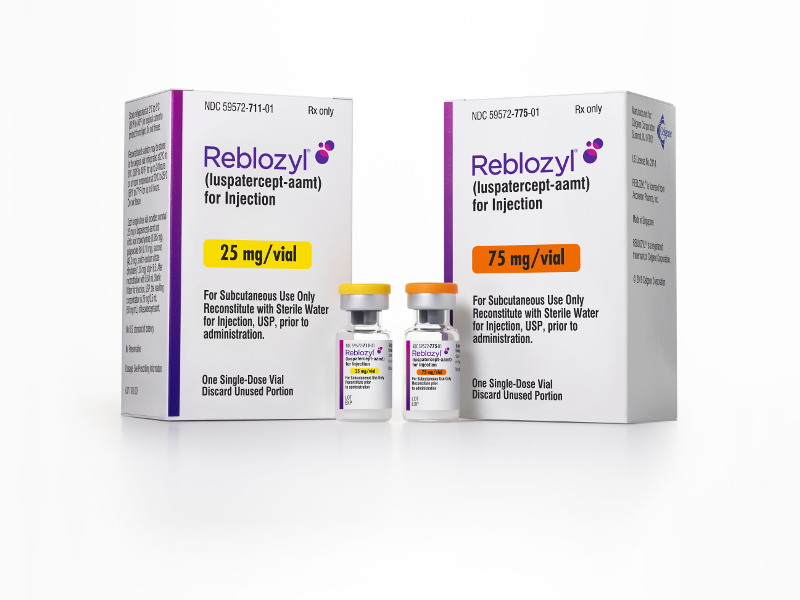New Iron deficiency treatments 2024
New Iron deficiency Treatments 2024
Iron deficiency is a common nutritional disorder that occurs when the body's iron levels are too low to meet its needs. This condition can lead to anemia, characterized by a reduced number of red blood cells or hemoglobin, which is responsible for transporting oxygen throughout the body. Symptoms of iron deficiency anemia can include fatigue, weakness, pale skin, shortness of breath, and dizziness. Risk factors for developing iron deficiency include a diet low in iron, blood loss (such as from heavy menstrual periods or internal bleeding), and conditions that affect iron absorption. It is important to diagnose and treat iron deficiency because, over time, it can lead to complications such as heart problems and delayed growth in children.
Treatment options for iron deficiency typically involve increasing iron intake through diet and supplementation. Oral iron supplements are commonly prescribed and are effective in replenishing iron stores, although they may cause gastrointestinal side effects in some individuals. In cases where oral supplements are not tolerated or absorbed well, intravenous iron therapy may be an option. It is crucial for individuals to work with their healthcare provider to determine the appropriate form of iron supplementation and dosage based on the severity of their deficiency and their overall health. Additionally, identifying and addressing the underlying cause of the iron deficiency is essential to prevent recurrence.

Treatment options
| Treatment option | Estimated cost | Efficacy | Eligibility |
|---|---|---|---|
| Oral Iron Supplements (e.g., ferrous sulfate) | $5 - $25 | Effective for mild to moderate deficiency | Most adults and children |
| Intravenous Iron (e.g., iron sucrose, ferric carboxymaltose) | $300 - $600 | Highly effective, especially for severe deficiency or malabsorption | Adults with severe deficiency or those who cannot tolerate oral iron |
| Blood Transfusion | $1,500 - $3,000 | Immediate increase in iron levels and red blood cells | Severe anemia or acute blood loss |
| Accrufer (Ferric Maltol) | $300 - $500 | Effective for mild to moderate deficiency | Adults with non-dialysis dependent chronic kidney disease |
| Feraccru (Ferric Maltol) | $300 - $500 | Similar to Accrufer | Adults with non-dialysis dependent chronic kidney disease |
| Reblozyl (Luspatercept-aamt) | $2,000 - $3,500 | Effective for anemia due to myelodysplastic syndrome or beta thalassemia | Adults with beta thalassemia or myelodysplastic syndrome |
| Dietary Changes (e.g., increased intake of red meat, beans, lentils) | Variable | May be effective over time with consistent dietary adherence | Most adults and children, unless contraindicated |
| Experimental Treatments (e.g., new oral iron formulations) | Variable | Varies based on treatment; not enough data for definitive conclusions | Varies based on specific treatment and trial eligibility |
Treatments options in detail
Oral Iron Supplements
Oral iron supplements are the most common first-line treatment for iron deficiency. The most frequently used forms are ferrous sulfate, ferrous gluconate, and ferrous fumarate. These supplements increase iron levels and help to replenish iron stores in the body. They are generally recommended to be taken on an empty stomach to enhance absorption, although they can be taken with food to reduce gastrointestinal side effects such as nausea and constipation. Vitamin C can be co-administered to increase iron absorption. It is important for patients to be monitored for efficacy and side effects, and dosage adjustments may be necessary based on individual response and tolerance.
Parenteral Iron Therapy
In cases where oral iron supplements are not tolerated or ineffective, or in situations where there is a need for rapid replenishment of iron stores, parenteral iron therapy may be used. This involves the administration of iron intravenously. Common intravenous (IV) iron preparations include iron sucrose, ferric carboxymaltose, and iron dextran. IV iron is often used in patients with significant anemia, chronic kidney disease, or gastrointestinal disorders that impair iron absorption. The administration of IV iron should be done under medical supervision due to the risk of allergic reactions, and patients are typically monitored during and after the infusion.
Dietary Changes
Dietary modification is an important aspect of managing iron deficiency. Patients are advised to increase their intake of iron-rich foods such as red meat, poultry, fish, beans, lentils, and fortified cereals. In addition to consuming more dietary iron, it is beneficial to include foods high in vitamin C to enhance iron absorption. Dietary counseling may be provided to help patients make appropriate food choices and to ensure a balanced intake of nutrients.
Accrufer (Ferric Maltol)
Accrufer, known as Feraccru in some regions, is an oral iron therapy containing ferric maltol. It is designed to provide a controlled release of iron and is indicated for the treatment of iron deficiency in adults. Accrufer has been approved by the FDA and is an option for patients who have not responded adequately to or cannot tolerate conventional oral iron supplements. It is taken orally and has been shown to cause fewer gastrointestinal side effects compared to traditional oral iron therapies. This may make it a suitable alternative for patients with gastrointestinal sensitivities.
Reblozyl (Luspatercept)
Reblozyl (luspatercept) is a newer medication that is FDA-approved for the treatment of anemia in adult patients with beta-thalassemia and for those with myelodysplastic syndromes (MDS). It is not specifically approved for iron deficiency anemia; however, it may be considered in certain cases where iron deficiency is secondary to these conditions. Reblozyl works by helping the bone marrow to produce more red blood cells, which can alleviate anemia. It is administered subcutaneously and may be an option for patients who have not responded to or are unable to receive other treatments. Its use for iron deficiency anemia outside of these specific conditions would be considered off-label.
Experimental Treatments
Research into new treatments for iron deficiency is ongoing, and there are experimental therapies being tested in clinical trials. These may include new oral iron formulations designed to improve absorption and reduce side effects, as well as novel parenteral iron preparations. Some experimental treatments focus on targeting the hepcidin pathway, which is a key regulator of iron metabolism in the body. By modulating this pathway, it may be possible to improve iron absorption and utilization. However, these treatments are not yet approved by the FDA and are not widely available outside of clinical research settings.
Treatments Not Approved by the FDA
There are treatments for iron deficiency that are available in other countries but have not been approved by the FDA for use in the United States. These may include different oral iron formulations or intravenous iron products. It is important for patients to be aware that using non-FDA-approved treatments can carry risks, including unknown side effects and potential interactions with other medications. Patients should consult with a healthcare provider before considering any treatment that is not approved by the FDA.
Management of Underlying Causes
In addition to treating iron deficiency with supplements and dietary changes, it is crucial to identify and manage any underlying causes of the deficiency. This may involve treating conditions such as gastrointestinal bleeding, heavy menstrual bleeding, or celiac disease, which can contribute to iron deficiency. In some cases, surgical interventions or other specific treatments may be necessary to address the root cause of iron loss or malabsorption.
Monitoring and Follow-Up
Regular monitoring and follow-up are essential components of treating iron deficiency. Patients should have their hemoglobin and ferritin levels checked periodically to assess the effectiveness of treatment and to determine when iron stores have been replenished. It is also important to monitor for any side effects of treatment and to make adjustments as needed. Long-term management may be required for patients with chronic conditions that predispose them to iron deficiency.
Conclusion
The treatment of iron deficiency encompasses a range of options from dietary changes and oral supplements to parenteral iron therapy and potentially off-label uses of medications. The choice of treatment should be individualized based on the patient's specific circumstances, including the severity of the deficiency, the presence of underlying conditions, and their response to initial treatments. Collaboration between the patient and healthcare provider is key to successfully managing iron deficiency and restoring normal iron levels.
Symptoms
Common Symptoms of Iron Deficiency
Iron deficiency is a common nutritional disorder that can lead to a variety of symptoms. The most common symptom of iron deficiency is fatigue or tiredness. This is because iron is a critical component of hemoglobin, which is necessary for transporting oxygen in the blood. When the body lacks sufficient iron, it cannot produce enough healthy red blood cells to effectively carry oxygen to the body's tissues, resulting in a condition known as anemia.
Another frequent symptom is pallor or paleness, particularly noticeable in the face, inner lower eyelids, and nails. This occurs because hemoglobin gives blood its red color, so low levels due to iron deficiency can cause the skin to lose its usual hue. Individuals with iron deficiency may also experience shortness of breath during routine activities due to the reduced oxygen-carrying capacity of their blood.
Heart palpitations, which are feelings of having a fast-beating, fluttering, or pounding heart, can also occur. This is the body's response to the decreased amount of oxygen in the blood, which causes the heart to work harder to try to deliver enough oxygen to the body.
Iron deficiency can lead to headaches and dizziness, which might be attributed to lower levels of oxygen reaching the brain. Some individuals may also experience a condition known as pica, which is characterized by cravings for non-food substances such as dirt, ice, or clay.
Another symptom is brittle or spoon-shaped nails, a condition referred to as koilonychia. In addition, people with iron deficiency might notice that their hair is falling out more than usual, which is a result of the body channeling its limited oxygen to support vital functions at the expense of hair growth.
Less Common Symptoms of Iron Deficiency
Some individuals with iron deficiency may experience a sore, inflamed tongue or mouth ulcers. The tongue may appear smooth and swollen, which can be a sign of a condition known as glossitis. Additionally, difficulty swallowing or a feeling of a lump in the throat, known as Plummer-Vinson syndrome, can be associated with severe iron deficiency.
Restless legs syndrome, a disorder characterized by an uncontrollable urge to move the legs, is more common in those with iron deficiency. This condition can lead to sleep disturbances and is often relieved temporarily by moving or massaging the legs.
Cold hands and feet can be another symptom of iron deficiency, resulting from the body's prioritization of blood flow to more critical organs and away from the extremities. This is a response to the reduced oxygen levels in the blood.
Iron deficiency can also affect the immune system, leading to an increased susceptibility to infections. This is because iron is needed for the proper functioning of immune cells.
Some individuals may experience tachycardia, which is an abnormally rapid heart rate. This condition can occur as the body attempts to compensate for the reduced oxygen-carrying capacity of the blood.
Behavioral and Cognitive Symptoms
Iron deficiency can have an impact on cognitive function, leading to difficulties with concentration and memory. Children and adolescents are particularly vulnerable to these effects, which can result in poor performance in school or behavioral problems.
Mood changes, including irritability and depression, can also be associated with iron deficiency. These symptoms may be due to the brain's reduced ability to function optimally without adequate oxygen and nutrients.
Symptoms in Infants and Children
In infants and young children, iron deficiency can be particularly harmful, as it can affect growth and development. Symptoms in this age group can include slow cognitive and social development, poor appetite, and failure to thrive.
Children with iron deficiency may also be more prone to infections and may exhibit behavioral changes such as being more fussy or inattentive than usual.
When to Seek Medical Attention
If you are experiencing symptoms of iron deficiency, it is important to seek medical attention. A healthcare provider can perform a physical examination and order blood tests to determine if you have iron deficiency anemia. These tests typically include a complete blood count (CBC) and measurements of serum ferritin, transferrin saturation, and serum iron levels.
It is essential to get a proper diagnosis and appropriate treatment, as untreated iron deficiency can lead to serious health complications, including heart problems and developmental delays in children. Treatment may involve dietary changes, iron supplements, or addressing any underlying causes of iron loss, such as bleeding.
Remember that self-diagnosis and treatment without professional guidance can be dangerous, as symptoms of iron deficiency can mimic those of other conditions. Always consult with a healthcare provider for an accurate diagnosis and treatment plan.
Cure
Iron Supplementation
Iron deficiency, characterized by an insufficient amount of iron in the body, is typically addressed through iron supplementation. Oral iron supplements, such as ferrous sulfate, ferrous gluconate, or ferrous fumarate, are commonly prescribed to replenish iron stores. The dosage and duration of treatment depend on the severity of the deficiency and the individual's response to therapy. It is important to monitor iron levels during treatment to avoid iron overload.
Dietary Modifications
Incorporating iron-rich foods into the diet is a fundamental aspect of curing iron deficiency. Foods high in iron include red meat, poultry, seafood, beans, dark green leafy vegetables, and iron-fortified cereals. Consuming vitamin C-rich foods alongside iron-rich foods can enhance iron absorption. Conversely, certain substances like calcium, tannins in tea, and phytates in some grains can inhibit iron absorption and should be consumed in moderation.
Parenteral Iron Therapy
For individuals who cannot tolerate oral iron supplements or those with conditions that impair iron absorption, intravenous (IV) iron therapy may be an option. This involves the administration of iron directly into the bloodstream, allowing for a rapid increase in iron levels. Parenteral iron therapy is also used in cases of severe iron deficiency or when a quick response is required, such as before major surgery.
Treatment of Underlying Causes
Addressing the underlying causes of iron deficiency is crucial for a cure. This may involve treating sources of blood loss, such as heavy menstrual bleeding or gastrointestinal bleeding, which can be caused by ulcers, polyps, or cancers. In some cases, surgical intervention may be necessary to stop the bleeding. Additionally, for individuals with celiac disease or other malabsorptive disorders, treating the primary condition can improve iron absorption and correct the deficiency.
Blood Transfusion
In extreme cases of iron deficiency anemia where there is a significant decrease in red blood cell count, a blood transfusion may be necessary to quickly restore hemoglobin levels and alleviate symptoms. This is typically reserved for acute or life-threatening situations and is not a standard treatment for iron deficiency.
Follow-Up and Monitoring
After starting treatment for iron deficiency, regular follow-up is important to ensure that iron levels return to normal and to prevent recurrence. This typically involves blood tests to measure hemoglobin, hematocrit, and ferritin levels. Monitoring should continue even after iron levels have normalized, as iron deficiency can recur, especially if the underlying cause has not been fully addressed.
Education and Prevention
Education on dietary choices and cooking methods that enhance iron intake and absorption can help prevent iron deficiency. For women of childbearing age, understanding the increased iron needs during pregnancy and the potential for iron deficiency postpartum is critical. In populations at high risk for iron deficiency, such as infants, young children, and vegetarians, proactive measures including iron supplementation and dietary counseling may be recommended.
Off-Label Uses of Medications
While not a cure for iron deficiency, certain medications may be used off-label to address conditions that contribute to iron deficiency. For example, hormonal therapies may be prescribed to reduce heavy menstrual bleeding, a common cause of iron deficiency in women. Proton pump inhibitors or H2 receptor antagonists, which are typically used for treating acid-related disorders, may also be prescribed to enhance oral iron absorption in patients with gastrointestinal disorders.
Research and Emerging Treatments
Research into new treatments for iron deficiency is ongoing. This includes the development of novel oral iron formulations designed to improve absorption and reduce gastrointestinal side effects. Studies are also investigating the role of hepcidin, a hormone that regulates iron metabolism, in the treatment of iron deficiency. Modulating hepcidin levels could potentially offer a new therapeutic avenue for individuals with iron-refractory iron deficiency anemia.
Conclusion
While there is no singular "cure" for iron deficiency that applies to all patients, a combination of iron supplementation, dietary modifications, treatment of underlying causes, and, in some cases, more advanced therapies like parenteral iron or blood transfusion, can effectively cure the condition. Individual treatment plans should be tailored to the patient's specific needs and monitored regularly to ensure efficacy and prevent recurrence.
Access Iron deficiency medicines today
If Iron deficiency medicines are not approved or available in your country (e.g. due to supply issues), you can access them via Everyone.org.
How Everyone.org works

Make an enquiry
Choose the medicine you want to access, answer a couple of questions, and upload your prescription to speed things up. We’ll get back to you within 24 hours.


Make an enquiry
Choose the medicine you want to access, answer a couple of questions, and upload your prescription to speed things up. We’ll get back to you within 24 hours.


Breeze through the paperwork
We'll guide you through the required documents for importing unapproved medicine, ensuring you have all the necessary information.


Get a personalized quote
We’ll prepare a quote for you, including medicine costs and any shipping, administrative, or import fees that may apply.


Receive your medicine
Accept the quote and we’ll handle the rest - sourcing and safely delivering your medicine.

Some text on this page has been automatically generated. Speak to your physician before you start a new treatment or medication.
Let's talk
If you have any questions, call us or send us a message through WhatsApp or email:
Contact us





